Province changes how it counts kids in care, reports lower number than Manitoba child welfare agencies
10,776 kids in care, province says after change to how number is tallied, but agencies say total is 11,143
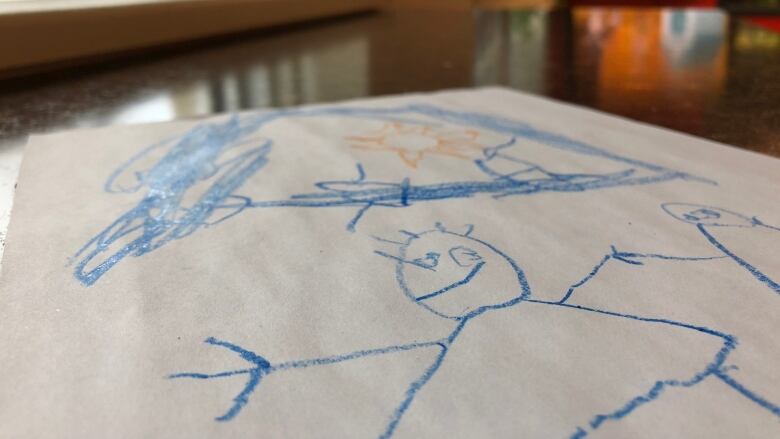
At first glance, it looks like the number of children in care in Manitobadecreased from just over 10,700 to 10,328 last year a figure touted by the Families minister as the first decrease in the number of children in care in over a decade.
But dig a little deeper and there is a different story, where the province has made changes to how it tallies that number and the result has raised questions about how many children are actually in care.
The province has moved from collecting self-reported numbers from child welfare agencies to using a central database to keep track of how many kids are in Child and Family Services care in Manitoba.
That has the provincereporting 10,328 kids in care, plus another 448 in "non-paid" care while Manitoba's four child welfare agencies say according to their annual reports, the number isactually closer to 11,150.
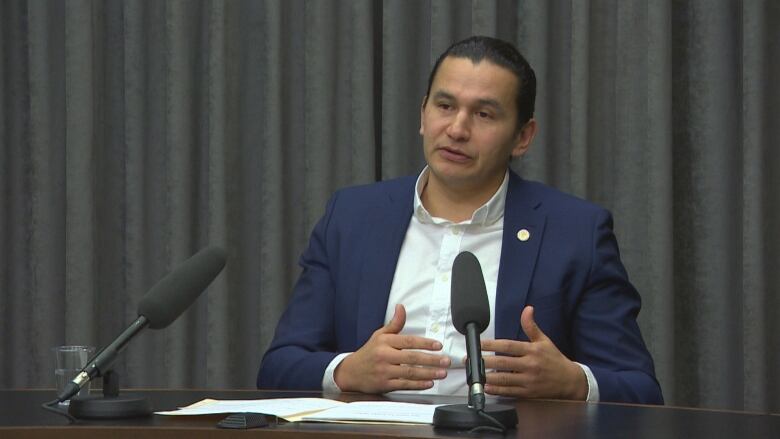
"I think the more cynical and perhaps more accurate read on what's happening here is that the government is deliberately undercounting the number of kids in care for political purposes," says Opposition NDP Leader Wab Kinew.
"If you change the methodology, halfway through, any claimto progress doesn't hold water.It is going to be important that there is a real benchmark to measure the progress here."
Using data compiled from Manitoba's Families department's annual reports and the annual reports of Child and Family Services mandated agencies, CBC News has lookedat how the changes have created the discrepancy.
What changes were made?
The government changed the way it defined "children in care" in 2017, by removing the category called "non-paid care" from its final tally reducing the number of kids in care by 638.
Children in non-paid care are those who are living with a parent, guardian or family members who have legal status as wards with CFS.
It was a move similar to one attempted by the thenNDP government in 2016, when it tried to remove the number of kids in voluntary placements from the total number of kids in care.
That change would have removed 700 children from thetotal number. It would also have excluded kids who are brought into the system under new customary care legislation both were to be reported in a separate category.

Progressive Conservative MLAIan Wishart, the Families critic at the time, said the counting change did nothing to improve on the number of kids in CFS care.
"They're trying to make it look like they're reducing the number and making progress downward, butthe reality isthey are still responsible for that many kids in one form or another," he said.
"It's a bit of an exercise in public relations, to put it bluntly."
The NDP backpedalled following the criticism, and vowed to continue to report all categories.
Change in 'interest of transparency'
The latest move to take"non-paid care"children out of the count was done in the "interest of transparency," a provincial spokesperson said.
"We believe a child reported to be at home with their families or guardians, where reunification plans are in progress, and without financial supports for their care should be counted separately from all other children in care," a spokesperson for the Families department wrote in a prepared statement.
The spokesperson said the department has"started reporting our number in two ways."
"The first is the self-reported number by the authority. The second is to separate by definition (children in care, living in an out-of-home placement, financially supported by the government)," he wrote.
"Both totals are clearly indicated and explained on the report."
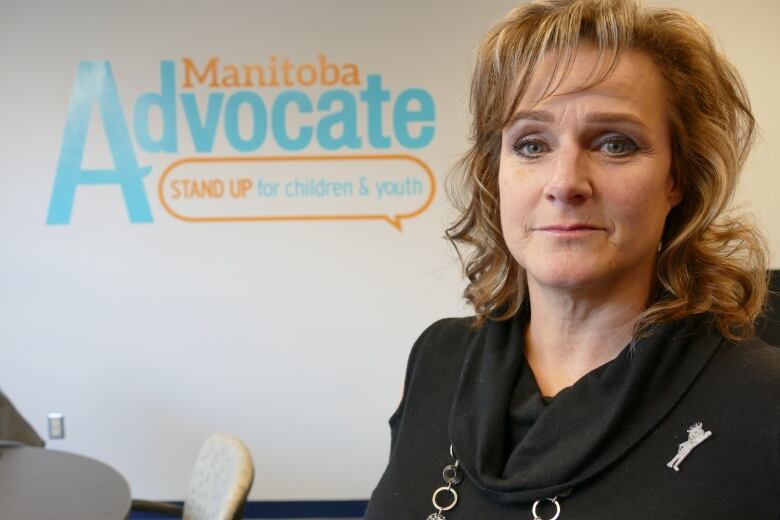
Daphne Penrose, Manitoba's advocate for children and youth, believes strongly that a person living in "non-paid" carewho has legal status as a CFS wardis still a child in care and should be counted as such.
"The legal statusis the legal status, and if it rests with an agency and the guardian is not the parent [but] the agency, that is considered to be a child in care," she said.
Not allthe non-paid care situations mean the child ison the path to reunification with their birth family, she said.
"Sometimes they are kids who are missing, sometimes they are kids who are in custody, so it's important to understand that isn't a hard and fast rule that they are all at home being reunified," she said.
The 2nd change
The waters were further muddied in 2018 when the Families department announced, on page 151 of its annual report, the number of children in care will be presented "differently than prior years."
Instead of self-reported data collected from child welfare agencies, it would instead use numbers taken from itscentralized system, called the Child and Family Services Information System.
"Reported numbers that mandated CFS agencies provide in their annual reports may differ from the Department's annual report," warned an internal memo, aheavily redacted copy of which was obtained under a Freedom of Information request.
The results presented by the agencies in their subsequent annual reports differ significantlyfrom the government's reported figures.
The province sent a release in September noting the number of children in care had decreased to 10,328 the first decrease in 15 years while also noting there were 448 kids in non-paid care.
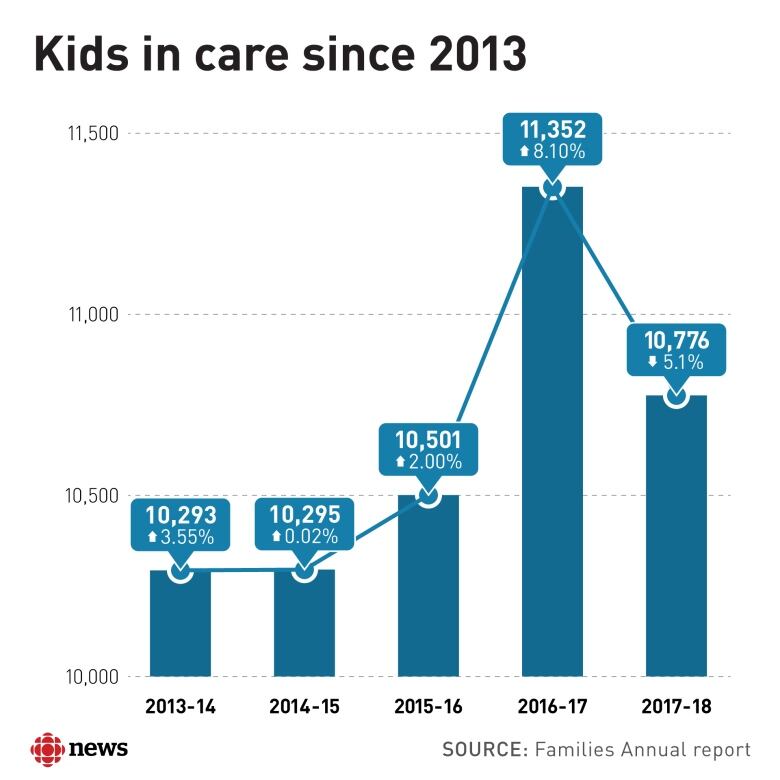
It was a reduction from the previous year which saw the largest spike in children in care in almost a decade. Even under the province's numbers, there are still more children in care today than there wereas of March 31, 2016.
Counting the figures in the annual reports of the four CFS-mandated agencies shows11,143 children in care as of March 31, 2018 367 more kids than the numbers released by the government, including children in non-paid care.
Families Minister Heather Stefanson said the decision to use numbers from the province'scentralizedsystem is about transparency and presenting more accurate numbers.
She argues the province knows"exactly who the kids are that are in care," by using the database.
"Is the system perfect? No. And it is really not about whether or not the numbers are going up or down it is to ensure we have the accurate number there," she said.
"I don't think there has been complete transparency in the numbers when there is a self-reporting system, because there is a lot of duplications and inaccuracies."
What do the authoritiessay?
The CBC reached out to the four authorities the Northern, Southern, General and Mtis Child and Family Services authorities to ask them about the numbers.
The Southern First Nations Network of Caresaidthe province's sudden change resulted in almost 200 more kids counted in their tally of children in care.
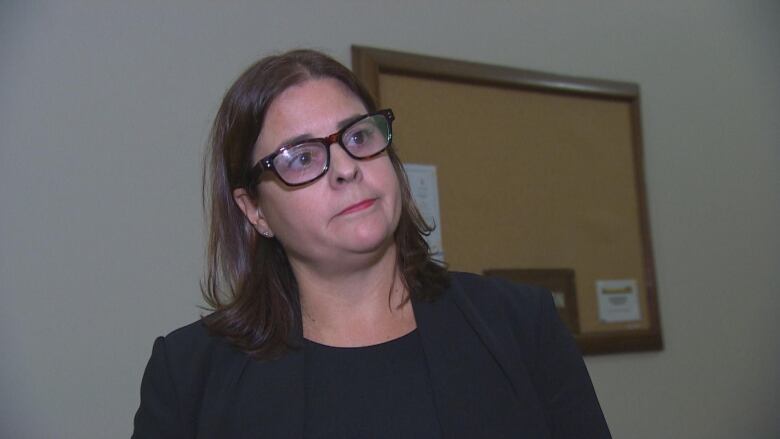
"There were some challenges in collecting information not available on [the Child and Family Services Information System] to ensure the case counts were consistent between the province, the Southern Network and its agencies," the authority wrote in a prepared statement.
It said under the previous system, where it would take the information from its 10 agencies and submit the information, it had been "consistent and accurate."
The General CFS Authority said it chose to include additional information, such as supervised adoption placements.
The Northern CFS Authority also cited challenges in using the centralized information system which has historically been difficultfor northern communities to use due to lack of internet access.
An analysis of the Northern, General and Southern authorities'figures over the past five years show their numbers matched those in the province's annual report,until the government intiated its first changes in 2017.
What's next?
Stefanson insists this is not a change to the way kids in care are counted.
"I do not believe there is a change in how the counts are [done]for children in care. It has been in place for many, many years now," she said.
"What has happened is there used to be a not very transparent process before we took office."
A Familiesspokesperson said the department will not commit to releasing the numbers compiled by the agencies because it is no longer collecting the information.
Chris Adams, a former pollster and political author, says sometimes governments have to "recalibrate" the way they collect data but need to publicly address that changes have been made.
"[The changes] might be a more accurate number for what was happening in society or with programs," he said.
They are not numbers. They are kids, and we need to understand we are accountable to those numbers and we want to know what is going on.- Daphne Penrose
But there could be an issue "if the dial is moving and we don't exactly know if that wasbecause the methodology changed, or because something in the program was changed," said Adams.
"You might be able to be glad about the numbers changing, but at the same time you have to preface your remarks by saying the measuring tool has changed."
Children's advocate Penrose says the key is to figure out why there is a discrepancy, and ensure there is consistency in the way the numbers are reported.
"They are not numbers. They are kids, and we need to understand we are accountable to those numbers and we want to know what is going on," she said.
"Moreimportant than the number is that children if there is a decrease in the number of children in care that it happens because children are safer at home and able to be at home safely," she said, and "that it is not just the matter of meeting a target."












_(720p).jpg)


 OFFICIAL HD MUSIC VIDEO.jpg)
.jpg)



























































































